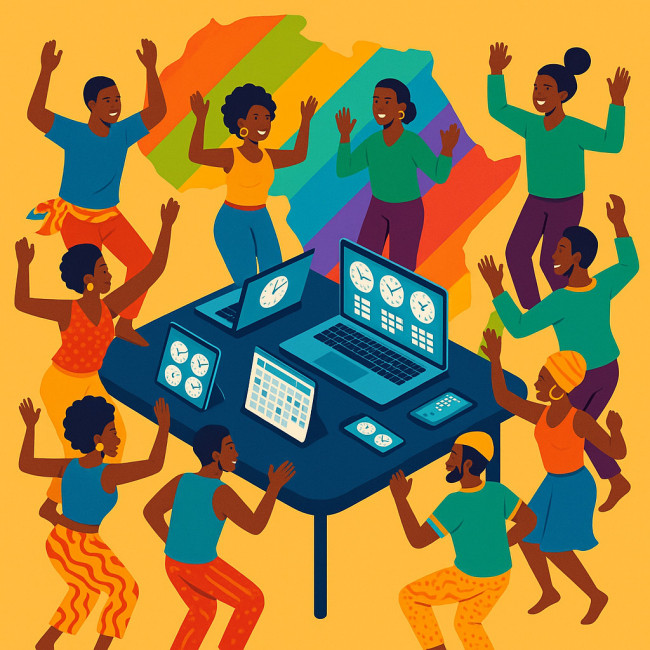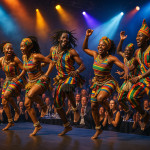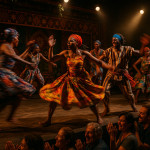Time-zone planning: coordinate online rehearsals with pan-African dance teams
Running an ensemble that stretches from Dakar to Nairobi? Smart time-zone planning cuts fatigue, boosts attendance and keeps your online rehearsals in perfect sync. This guide maps Africa's time offsets, shows you how to pick overlap windows, and lists the digital tools that make cross-border choreography feel local.
Why time-zone planning shapes rehearsal success
Pan-African dance collaborations span eight time offsets, from UTC–01:00 in Cape Verde to UTC+04:00 in Mauritius. Without a clear plan, dancers join half-awake or miss entire sessions. Structured time-zone planning:
- Protects dancers' rest and reduces injury risk.
- Cuts rescheduling emails by up to 80 %.
- Speeds creative decisions because every camera is live at once.
You also send a professional signal to bookers browsing the pan-African dancer directory: a crew that masters logistics is rehearse-ready for any gig.
Snapshot of African time zones
Before opening calendars, know the landscape. The bar chart below counts sovereign African states per UTC offset. Data comes from the IANA Time Zone Database (2024).
Source : IANA TZ Database
The 4-step scheduling workflow
1 – List each dancer's home city and UTC offset
Collect addresses at onboarding. A shared sheet beats a group chat that scrolls out of sight.
2 – Pick a rehearsal window all zones can tolerate
Most African dancers juggle day jobs. Target weekday evenings or Saturday mornings.
| UTC | West Africa (UTC+0 – +1) |
Central Africa (UTC+2) |
East Africa (UTC+3 – +4) |
Notes |
|---|---|---|---|---|
| 17:00 UTC | 17:00-18:00 | 19:00-20:00 | 20:00-21:00 | Best overall: post-work for most, pre-bed for East |
| 09:00 UTC | 09:00-10:00 | 11:00-12:00 | 12:00-13:00 | Great for Saturday sessions |
| 13:00 UTC | 13:00-14:00 | 15:00-16:00 | 16:00-17:00 | Good for quick mid-day run-through |
3 – Lock the slot in a shareable calendar
Use Google Calendar's “Find a Time”, then invite dancers. For multi-crew projects, integrate a geo-targeted booking calendar so bookers see real-time availability.
4 – Automate reminders in local time
Automated emails convert UTC to local time, reducing errors. Calendly, Doodle and Zoom all send time-zone-aware reminders.
Digital tools that simplify cross-border rehearsals

Coordinating rehearsals across Luanda, Kigali and Port Louis feels less chaotic when every dancer sees the same slick dashboard: color-coded clocks, sliding availability bars and one-click join links embedded in their calendar events. If you're building that control center, combine mainstream platforms—Google Workspace, Zoom and Discord—with specialised utilities like WorldTimeBuddy. Layer them with adequate bandwidth monitoring widgets, and you generate a studio-grade experience even when the troupe is separated by thousands of kilometres and four offsets. A well-designed stack cancels guesswork, protects creative energy and wins back hours for choreography.
- WorldTimeBuddy – visual slider ideal for spotting overlap.
- When2Meet – free grid voters use to show live availability.
- Discord Stage Channels – low-latency audio with screen share.
- OBS + NDI – send multi-camera feeds without pricey hardware.
- For advanced immersion, explore VR rehearsal tech that places dancers in the same virtual studio at their local hour.
Bandwidth & tech checks
Video lags ruin counts. Run a quick test before the first full call:
- Ask dancers to confirm 10 Mbps down / 3 Mbps up (minimum for 720p).
- Set Zoom to “Original Sound” to keep rhythm audible.
- Mute all mics during run-throughs, then unmute for feedback rounds.
- Record cloud-side to avoid local storage issues.
Need lightning-fast cross-zone uploads? Pair your workflow with the flexible rehearsal scheduling tips musicians swear by.
Handling daylight-saving surprises
Africa mostly avoids DST, but partners in Egypt or Morocco might shift clocks. Add a second time-zone watch on your phone and enable Google Calendar's “world clock” sidebar. If a clash slips through, follow this rapid fix:
- Send a chat blast with the corrected UTC time.
- Update the invite so future reminders adjust automatically.
- Record the missed section so latecomers can catch up asynchronously.
Keep dancers energised across offsets
- Rotate who stays up latest. Equity builds trust.
- Open sessions with a one-minute intro in a different language each week to celebrate diversity.
- Schedule 10-minute water breaks every 50 minutes; dehydration hits harder late at night.
Quick quiz: are you a time-zone pro?
FAQ
- How do I calculate the ideal rehearsal length across three time zones?
- Cap sessions at 90 minutes. Attention dips after that, especially for the zone rehearsing latest.
- What if a dancer travels and changes zones temporarily?
- Ask them to update the shared sheet; your calendar will auto-shift once their new offset is entered.
- Can I rehearse asynchronously instead?
- Yes. Use pre-recorded run-throughs plus feedback threads, but keep one live session weekly to maintain ensemble cohesion.
- Which platform handles both time-zone invites and high-quality audio?
- Zoom Pro does both. For free options, pair Google Calendar invites with a Discord voice room.
- Where can I find more tips on remote collaboration?
- Read our guide to cross-border creative rehearsals for extra workflow tweaks.
Wrap-up & next steps
Mastering time-zone planning transforms your pan-African dance team from scattered to seamless. Block overlap windows, automate reminders, and refine the tech stack. Ready to elevate rehearsal flow even further? Subscribe to our newsletter and receive a printable rehearsal-planning checklist.











